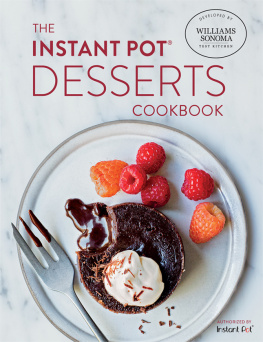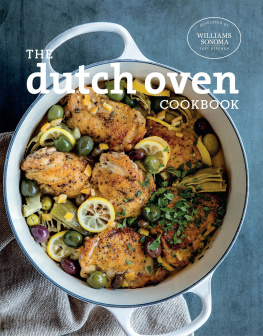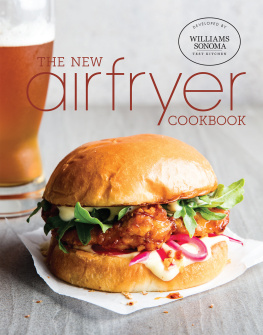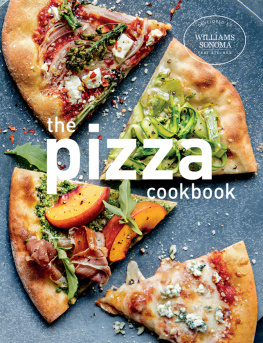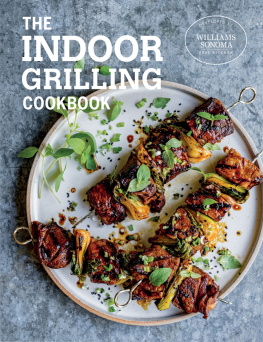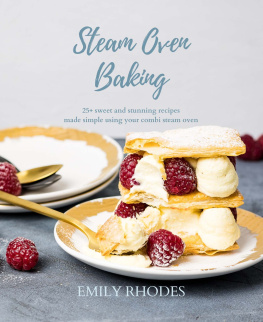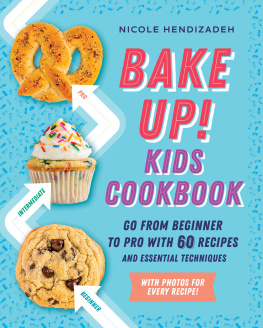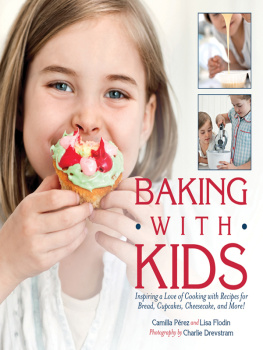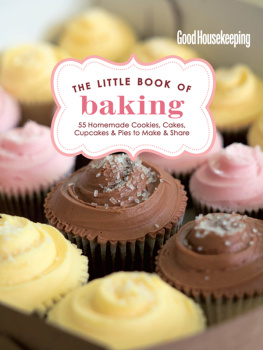Table of Contents
Guide
photographs AubriePick
Junior Baker
t he
coo k b o o k
Lets Bake!
Preparing Equipment
Bakers Pantry
Recipes
Index
Contents
Theres nothing like
dessert warm from the
oven! Head to
to get the recipes
for these Mini
SMores Tarts.
Cookies, cakes, breads, and other delicious baked confections are
the ultimate treats. Whether youre waking up with a coffee-cake
muffin, enjoying an afternoon snack of perfect chocolate chip cookies,
or serving buttermilk biscuits with dinner, there are so many ways to
savor baked goods any time of day. And whats more, you can have
a lot of fun learning to make these recipes from scratch! With the
help of an adult, you can enjoy the satisfaction of mixing together a
few simple ingredients to make unforgettable snacks and desserts.
Dont forget to share!
This collection of easy-to-prepare recipes, a companion book to
Williams Sonomas popular Junior Chef cooking class series, will inspire
you to explore and create in your own kitchen. Youll find recipes for
making all your favorite confections from the bakery, like cinnamon
rolls, shortbread, mini cupcakes, whoopee pies, brownies and blondies,
cheesecake, biscotti, and many more. Discover savory breads, like
dinner rolls with a homemade spice blend, pizza-like focaccia topped
with tomatoes, and scones flavored with bacon and cheese.
Also included are plenty of tips, tricks, and solutions for simplifying
recipes. A handy guide to preparing equipment, stocking basic
ingredients, and testing for doneness will help you become a baking
pro! Before you know it, your friends will be asking you to bake their
birthday cakesand youll be ready to whip up a festive confetti cake.
So crank up the oven, roll up your sleeves, and fill the kitchen with
mouthwatering smells.
Lets Bake!
Buttering: Use a piece of wax paper to hold a pat of softened, unsalted
butter and generously coat the pan's inside, bottom, and sides.
Buttering and Flouring: Follow the buttering method above, then add
2 tablespoons flour to the pan. Tilt and shake the pan to coat the
buttered surface evenly. Tap out any excess.
Lining Round Pans: Butter (see above) the pan. Cut out a large sheet
of parchment paper. Place the cake pan right side up on the parchment
and trace the circumference. Cut out the circle just slightly to the
inside of your traced line so that the parchment fits snugly in the pan
bottom, not coming up the sides.
Lining Rimmed Baking Sheets: Cut a piece of parchment paper about
the length of the baking sheet. Place the parchment in the baking sheet,
folding the excess until it fits snugly. Using the paper folds as your guide,
use scissors to trim the parchment. Lay it in the baking sheet, making
sure that it covers all the corners but does not fold over the sides.
Preparing Equipment
Many recipes call for buttering, flouring, and/or lining baking equipment.
Heres how to get it done:
Testing for Doneness Most recipes include both a time and a visual
cue to test for doneness. Its important to follow these instructions
and to always set a timer! For most cakes, you can use a toothpick
to check for doneness: When you think the cake is done, stick a
clean toothpick into the center. If the toothpick comes out clean,
the cake is ready. If the toothpick comes out with batter on it, the
cake needs more baking.
Buttering pans
helps stop food from
st
icking: foods release
more easily and
pans are easier
to clean.
Flour: There are many varieties of flour, but
most of the recipes in this book call for all-
purpose flour. Some brands offer bleached
and unbleached versions of all-purpose flour.
You can use either type for these recipes.
Baking Soda: Cookie doughs and cake batters
rely on this leavening agent to help them rise in
the oven. Baking soda reacts immediately when
mixed with liquid, so it should always be com-
bined with dry ingredients before liquid is added.
Baking Powder: This is another powerful
leavening agent that, when mixed with liquid,
releases carbon dioxide bubbles that give
baked goods a fluffy, airy texture.
Eggs: Fresh eggs are important for adding
moisture to baked goods. Choose eggs labeled
medium or large; using extra-large eggs
can lead to doughs or batters that are too wet.
Vanilla Extract: Look for pure vanilla extract
at the store. Made from real vanilla beans, it
costs more than the bottles labeled imitation
vanilla, but it has a purer, more complex flavor.
Bakers Pantry
A well-stocked pantry means being able to bake whenever a craving
strikes with little need to plan or shop. Keep these essential bakers
ingredients on hand, supplementing them with any special or fresh
ingredients a recipe requires.
Buttermilk: For every
1 cup of buttermilk called
for, use 1 cup milk mixed
with 1 tablespoon white
wine vinegar or lemon
juice. Let the mixture
sit for a few minutes
until it is slightly curdled.
Nuts and Dried Fruit:
You can use any nut or
dried fruit you like, just
make sure its a similar
size to the original
ingredient called for in
the recipe. If not, chop
it to match that size.
Eggs: In cake and
quick bread batters, you
can substitute cup
applesauce or mashed
banana (about half a
banana) for every egg
called for in the recipe.
Swap It Out
Sometimes recipes
call for ingredients that
you either dont have
or dont enjoy. Heres a
simple key to swapping
out ingredients.
To make the filling, in a bowl, stir together the berries,
lemon juice, granulated sugar, and flour. Set aside.
To make the dough, whisk together the flour and salt.
Using a food processor or pastry cutter, blend in the
butter until the mixture resembles coarse sand. Add the
water and blend until a dough forms.
Line a baking sheet with parchment paper. Turn
the dough out onto a lightly floured work surface
and roll out into a 16-by-12-inch rectangle about inch
thick. Using a 6-inch r
ound cutt
er, cut out 4 rounds of
dough. Transfer to the prepared baking sheet.
In a small bowl, whisk together the egg and
1 teaspoon water. Brush the edges of the dough
rounds with some of the egg mixtur
e. Divide the filling
evenly among the rounds, placing it in a mound in the
center. Fold the edges of the dough together up and
over the filling, forming loose pleats and leaving the
cent
er uncovered. Brush the dough with the egg mixture
and sprinkle with turbinado sugar. Refrigerate the
galettes for at least 15 minutes or up to 4 hours.



